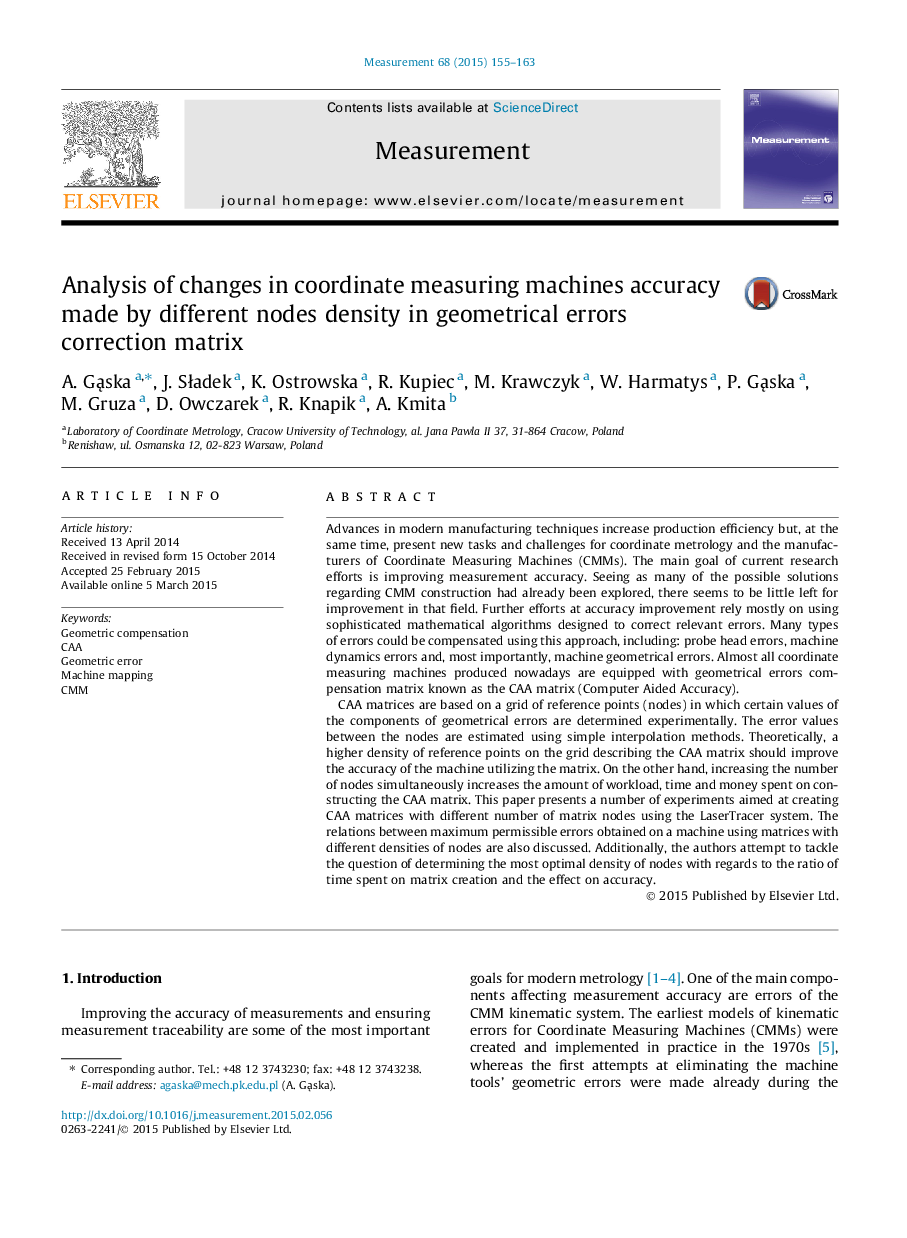| Article ID | Journal | Published Year | Pages | File Type |
|---|---|---|---|---|
| 7124494 | Measurement | 2015 | 9 Pages |
Abstract
CAA matrices are based on a grid of reference points (nodes) in which certain values of the components of geometrical errors are determined experimentally. The error values between the nodes are estimated using simple interpolation methods. Theoretically, a higher density of reference points on the grid describing the CAA matrix should improve the accuracy of the machine utilizing the matrix. On the other hand, increasing the number of nodes simultaneously increases the amount of workload, time and money spent on constructing the CAA matrix. This paper presents a number of experiments aimed at creating CAA matrices with different number of matrix nodes using the LaserTracer system. The relations between maximum permissible errors obtained on a machine using matrices with different densities of nodes are also discussed. Additionally, the authors attempt to tackle the question of determining the most optimal density of nodes with regards to the ratio of time spent on matrix creation and the effect on accuracy.
Keywords
Related Topics
Physical Sciences and Engineering
Engineering
Control and Systems Engineering
Authors
A. GÄ
ska, J. SÅadek, K. Ostrowska, R. Kupiec, M. Krawczyk, W. Harmatys, P. GÄ
ska, M. Gruza, D. Owczarek, R. Knapik, A. Kmita,
